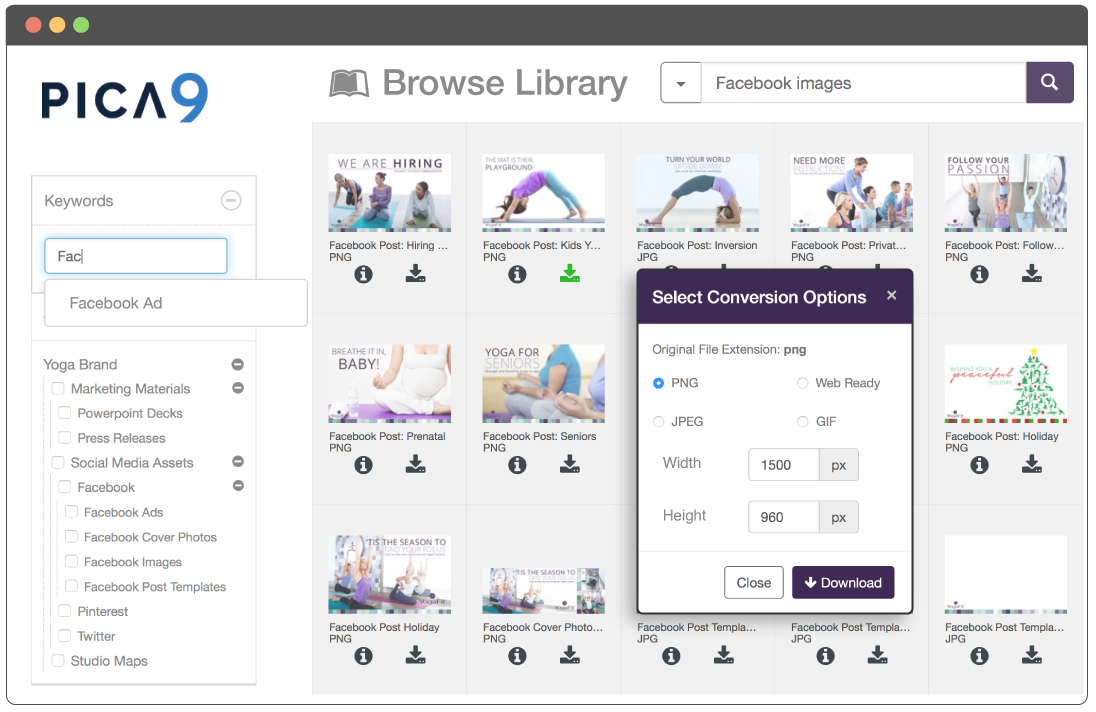Omni-channel marketing is essential for any major company or corporation. Marketers and designers are tasked with the most important function, capturing and amplifying that brand’s identity and value through shared marketing resources.
With an organized system, marketing resources can be used effectively and efficiently; streamlining processes, promoting business growth, and reducing waste and duplication of efforts for marketing and design teams.
This is especially important for a local marketing strategy, where brand consistency, audience personalizations, and fast distribution are crucial for campaign success regionally.
Organized marketing resource systems can help to accomplish all of these aspects using these five key methods:
1. Centralize Storage
All marketing resources should be kept in a centralized repository, ensuring that content is easily accessible to marketing teams both at a national and regional level so they can quickly launch effective campaigns.
A centralized asset management platform for marketing resources can help reduce costs through economies of scale, as well as eliminate duplicates. Centralized storage also simplifies training, encourages brand consistency, and speeds up the creation of new campaigns and materials.
Learn more: The Ultimate Brand Consistency Checklist for Local Marketing
2. Standardize File Names and Formats
Setting standard formats and naming conventions is crucial for an organized system. Without standardized formats for content, management and organization of digital assets is unachievable.
Equally important is file name standardization. Without a manageable, repeatable system for naming files, content can become impossible to locate, wasting valuable time and resources.
3. Create Role-Based Permissions
By creating a role-based access control system, an administrator can decide who can see, use, modify or delete marketing resources. Assigning responsibilities based on the person’s role in the organization creates an easy, rational way to control what users see and how they use marketing resources.
This can help to prevent misuse of materials, as well as the unintended loss or deletion of usable files.
4. Save Date / Version
Saving different iterations of content throughout the creative process, including the date of change or update, can help marketers work efficiently. Providing the ability to audit an item’s history, restore a prior version, and compare resources to one to another can help save time and reduce the risk of losing valuable data.
5. Self-Service Portals
Once content is centralized, and permissions are created, appropriate individuals can access resources without interrupting others. With self-service access, a company can improve efficiencies and reduce delays throughout the organization.
By using a resource management platform like CampaignDrive, businesses can streamline digital asset processes throughout the organization and provide customizable assets to local marketers while also ensuring brand integrity from corporate headquarters to local branches. This type of organization helps reduce wasted resources, inefficiencies, and errors while improving processes for corporate and local marketing.
CampaignDrive is a cloud-based platform that allows global marketing teams to centralize the storage of branded marketing assets like brochures, flyers, menus, and more. Local marketing teams can easily locate and customize the marketing assets they need to set up and launch campaigns quickly, without needing to send one-off requests to the corporate office.
For more information on how CampaignDrive can improve your local marketing and help you organize marketing resources, request a demo today.




